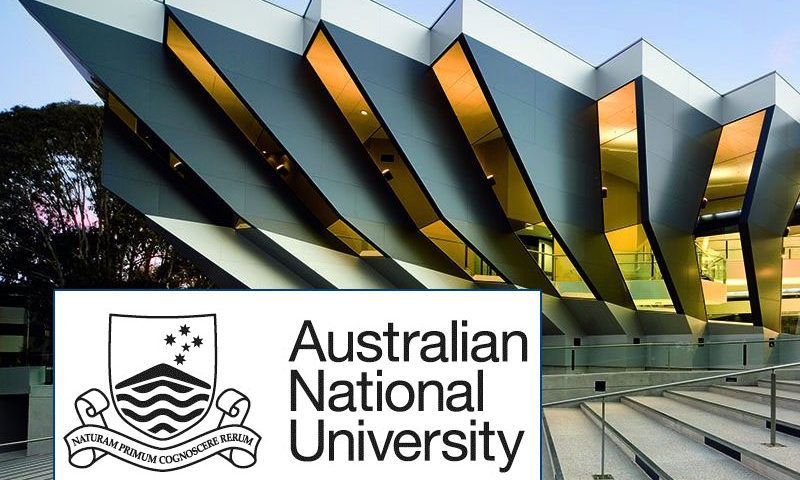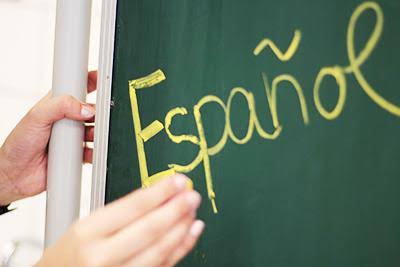Obtaining admission to schools in the USA is particularly difficult because the number of openings does not correspond to the number of students applying.
Hence, this makes them the most selective colleges in the USA.
If you still insist on studying in any of these most selective colleges in the USA, you must brace up for a hard time at the entry point because it is most likely that you won’t be taken. Hence, your chances of being denied admission are far higher than your chances of being taken.
So, this is exactly why you need to give serious attention to this writing because it can guide you in making a choice in any of these schools.
Most selective colleges in the U.S are ranked by percentage of acceptance rates, from lowest to highest. These schools accept a lower percentage of applicants than any other.
In this article, you will explore the most selective colleges in the United States, why they accept so few applicants, and some advice on what to do if you really want to enter any of these schools.
Table of contents
What Are the Selective Universities?
These universities have the lowest acceptance rates in the United States. You’re the hardest to reach, period. And every year they become more selective. But at least you still have a better chance of getting to Harvard than being struck by lightning.
The list does not include essentially free colleges (though many have a service request). The list does not include schools with a performance or portfolio-based admission process.
Selectivity alone does not explain how difficult it is to get to school. Some schools that are not on this list have students with higher average GPAs and test scores than some schools on the list.
It is tempting to judge the quality of a school based on its admissions rate. Although in most cases this is a reasonable method of assessing schools, there are some special circumstances that can lead to extremely low acceptance rates at less academically demanding universities.
How Do I Know a Selective College?
Selective Colleges are schools that only accept a small percentage of applicants. There are several reasons why certain universities have such low acceptance rates.
Some schools are extremely selective because they look for a specific specialized applicant and very few students meet the requirements.
This category would include a school like Juilliard, which is only interested in receiving students who demonstrate virtuosity in music. Students have to speak to faculty members as one of their application requirements.
This group also includes military schools such as West Point, where candidates pass physical fitness assessments and must be nominated by their representatives in Congress or Senate to be considered for admission.
Other universities are extremely selective because they are looking for students with excellent overall qualifications and can only afford to get the best performers out of the huge pool of applicants they attract.
These schools are an interface between popularity and very high standards. This includes Ivy League schools and schools like Stanford and MIT.
These schools are also well known internationally and therefore attract a large number of applicants. In 2018-19, Harvard only offered 1,950 students out of a total of 43,330 applicants!
To maintain their reputation, these schools can only select the most outstanding students for each class. It usually takes more than excellent grades and test results to get started. You need these qualifications in addition to other unique academic and extracurricular achievements.
You can now attend and obtain a certificate from Schools in the US without attending physical classes. Click below to explore the
Top 10 Online Universities and Colleges in the US
The Most Selective Colleges
The most selective colleges in the United States are categorized into two types; Non-specialized Selective Schools and specialized Selective Schools.
Non-Specialized Selective Schools
First, we will list some schools with low admission rates because they’re extremely popular and can only choose the strongest overall applicants. These schools are listed in descending order, starting with the most selective school.
Remember that even if your SAT/ACT scores and GPA are technically at the same level as the averages at these schools, you can’t count on being accepted.
Any school with an acceptance rate of less than 15% is a beyond-reach school even for the best students, and any school with an acceptance rate of less than 30% is still very selective.
READ ALSO: SAT Essay Tips: 13 Ways to Improve Your Score
Stanford University, Stanford, California
Stanford reveals that selectivity isn’t limited to elite East Coast schools. In 2015, the school accepted a lower percentage of students than Harvard, and with the most recent data, it ties the prestigious Ivy League school.
Acceptance Rate: 4%
Enrolment: 17,184 (7,034 undergraduates)
Harvard University, Cambridge, Massachusetts
All of the Ivy League schools are highly selective, but Harvard is not just the most selective of the Ivies, but it typically ranks as the most selective university in the United States. As both U.S. and international applications surge, the acceptance rate has steadily declined over the years.
Acceptance Rate: 5%
Enrolment: 29,908 (9,915 undergraduates)
Yale University, New Haven, Connecticut
Four of the five most selective universities in the country are Ivy League schools, and Yale falls just shy of beating out Stanford and Harvard.
Like most of the schools on this list, the acceptance rate has been steadily declining in the 21st century.
Over 25% of applicants receive a perfect score on the SAT math or SAT critical reading exams.
Acceptance Rate: 6%
Enrolment: 12,458 (5,472 students)
Princeton University
Princeton and Yale give Harvard tough competition for the most selective of the Ivy League schools.
You need the full package to get to Princeton: “A” grades in demanding courses, impressive extracurricular activities, bright letters of recommendation, and high SAT or ACT scores. Even with this credential, approval is not a guarantee.
Acceptance Rate: 6%
Enrolment: 8,181 (5,400 students)
SEE ALSO: 20 Best Non Ivy League Schools To Consider In 2024
Columbia University, New York, New York
Colombia’s selectivity has increased faster than many other Ivies, and it is not uncommon for the school to be linked to Princeton.
The urban location in Manhattan’s Upper West Side is a big draw for many students (for students who don’t love the city, be sure to visit Dartmouth and Cornell).
Acceptance Rate: 6%
Enrolment: 29,372 (8,124 students)
MIT (Massachusetts Institute of Technology) Cambridge, Massachusetts
In some rankings, MIT is the number 1 in the world, so it should come as no surprise that it is extremely selective. Among the technology-focused schools, only MIT and Caltech created this list.
Applicants must be particularly strong in math and science, but all parts of the application must shine.
Acceptance Rate: 7%
Enrolment: 11,376 (4,524 students)
Caltech (California Institute of Technology), Pasadena, California
Caltech is three thousand miles from MIT and is equally selective and prestigious. With fewer than a thousand students and an astonishing 3 to 1 student to faculty ratio, Caltech can offer a transformative educational experience.
Acceptance Rate: 7%
Enrolment: 2,240 (979 students)
Check out 20 Best Community Colleges in California 2024 [UPDATED]
University of Chicago, Chicago, Illinois
Highly selective universities are by no means limited to the east and west coast. The University of Chicago’s single-digit acceptance rate makes it the most selective university in the Midwest. It’s not an Ivy League school, but admission standards are comparable. Successful applicants have to shine on all fronts.
Acceptance Rate: 8%
Enrolment: 15,775 (6,001 students)
Brown University, Providence, Rhode Island
Like all Ivies, Brown has become increasingly selective in recent years, and successful applicants need an impressive academic record and real extracurricular achievements. The school campus is next to one of the country’s most selective art schools: the Rhode Island School of Art and Design (RISD).
Acceptance Rate: 8%
Enrolment: 9,781 (6,926 students)
Pomona College, Claremont, California
Pomona College is the most selective college for liberal arts on this list. The school has started to replace Williams and Amherst in some national rankings of the best liberal arts colleges in the country, and their membership of the Claremont Colleges consortium offers numerous benefits to students.
Acceptance Rate: 8%
Enrolment: 1,563 (all students)
Do you know that You can attend college for free in the US? Click on the link below to find out the
READ ALSO: Top 10 Free Colleges in USA
Specialized Selective Schools
Now we introduce the highly selective schools because they have special programs and are looking for certain types of applicants.
In highly selective music schools, test results and grades are far less relevant for a student’s likelihood of acceptance. These schools view musical talent much more than academic achievements.
Curtis Institute of Music, Philadelphia
This school is only looking for the best music students and the admission is “only based on artistic promises.” The Curtis Institute also offers all students a full scholarship.
Together, these factors result in an acceptance rate that is below that of the most competitive universities on the first list.
Acceptance Rate: 3%
The Juilliard School, New York
Like the Curtis Institute of Music, Juilliard is only looking for a very specific and very talented subset of students. Students have to audition for faculty members as part of the application process, and performance standards are exceptionally high.
Acceptance Rate: 5%
To participate in the US Naval Academy, students must apply to a U.S. representative, senator, or vice president and receive a nomination.
Students must also pass a physical fitness assessment and a medical exam. The academic standard is very high, so there is only a small group of students who meet all of the required requirements.
Acceptance Rate: 8%
U.S. Military Academy (West Point), New York
West Point has such a low acceptance rate because students have to pass other patterns in addition to other test results and grades.
Applicants must do a physical fitness assessment, do as many push-ups as possible in two minutes (for me, that would be about 0.5), run a mile as quickly as possible, and do some other agility and strength tests.
You must also apply for a Congresswoman, Senator, or Vice President nomination. Only students whose nominations are approved will be given a place in West Point.
Acceptance Rate: 9%
READ ALSO: Top 10 Military Schools For Boys In USA | 2024 Ranking
Alice Lloyd College, Pippa Passes, Kentucky
Alice Lloyd is a boarding school for liberal arts. Despite the low acceptance rate, academics with less impressive average test results are not particularly competitive here.
As a compromise for lower educational standards, most students have very little debt.
Acceptance Rate: 10%
Related Post: Ivy League Acceptance Rates: What The Battle Is Like in 2024
What to do if you are aiming for the most selective colleges?
If you hope to attend one of these selected schools, that’s great! There is no magic formula for acceptance, but you don’t have to rely on luck if you play your cards right.
To have a solid chance of acceptance at one of the non-specialized selective colleges, you have to take the most difficult classes throughout high school and get very good grades.
As you can see from the average GPAs for admission to these schools, most students are expected to have high school diplomas dominated by aces.
SAT / ACT results are also very important; Your score should be at or above the average of admitted students.
Even at non-specialized schools (but especially at specialized schools), performing excellently in an academic or extracurricular area is essential if you want to stand out from the crowd.
Since you compete with so many applicants and most have academic credentials that are as good as yours, you need to find a way to demonstrate your worth as a college community member that goes beyond grades and test results.
The most selective schools value passion, drive, and lateral thinking. If you can develop a specialization showing these qualities, your chances of acceptance are very high.
Conclusion
If you want to go to a highly selective school, you must have a very good academic record in high school. The ranking lists of most selective colleges in the USA can have a strong impact on how people rate the quality of certain schools. So prepare yourself well before applying to study in any of these colleges.
References
- www.collegexpress.com › lists › list › the-25-most-selective-colleges
- www.usnews.com › Education › Colleges
- www.niche.com › colleges › search › hardest-to-get-in
- www.thoughtco.com › College Admissions › Choosing A College
- blog.prepscholar.com › the-most-selective-colleges-in-the-us




